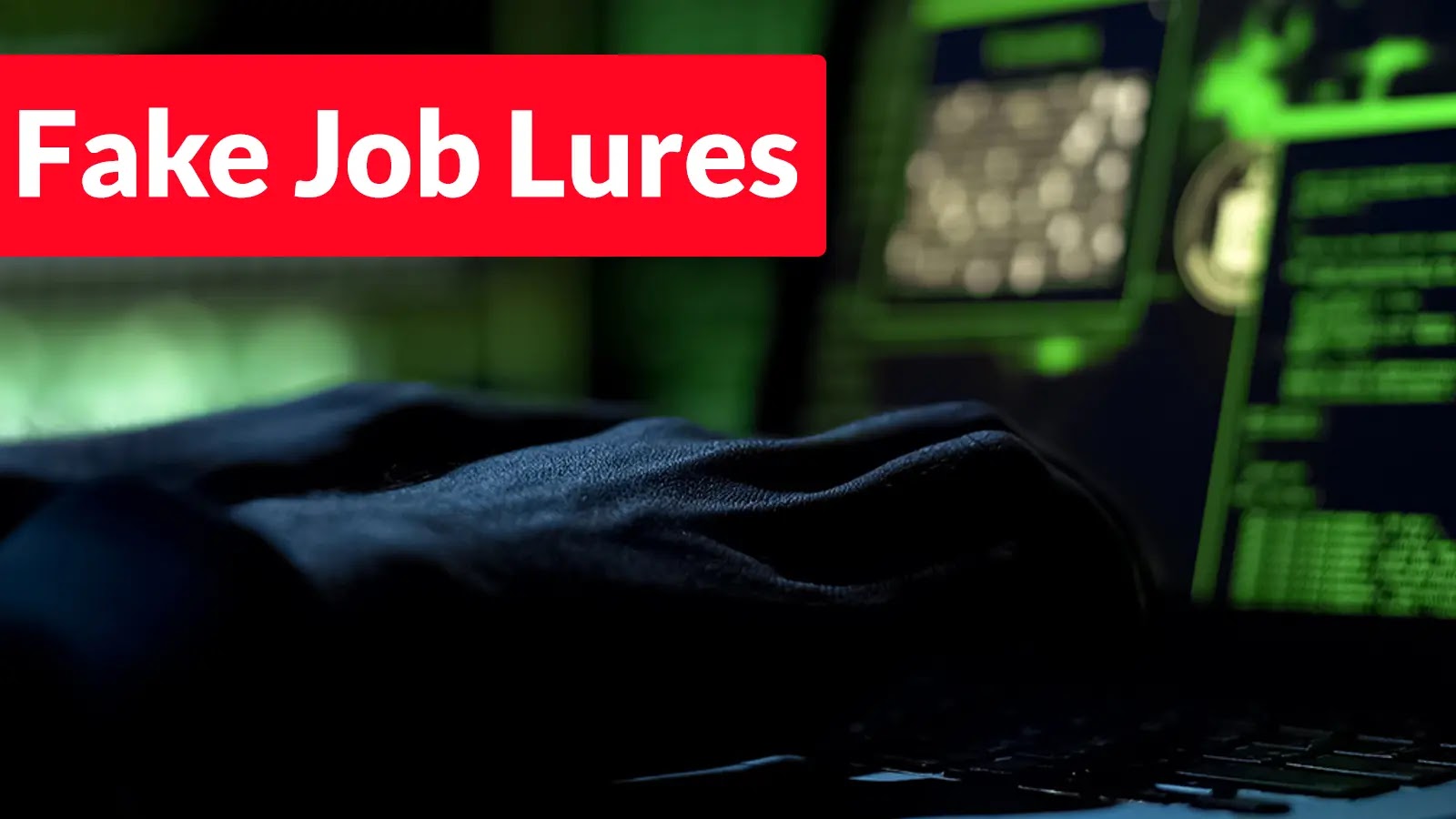
Threat Actors with Fake Job Lures Attacking Job Seekers to Deploy Advanced Malware
The Deceptive Lure: How Threat Actors Weaponize Fake Job Offers with Advanced Malware
In the relentless landscape of cybersecurity threats, a particularly insidious campaign has taken root. State-linked threat actors are exploiting the hopes and ambitions of job seekers, weaponizing fake employment opportunities to deploy sophisticated malware. This isn’t just about phishing for credentials; it’s a calculated strategy to gain deep-seated access to sensitive networks, often targeting critical sectors like aerospace and defense. Understanding this evolving threat is paramount for individuals and organizations alike.
Anatomy of a Sophisticated Cyber Deception
The core of this attack vector lies in its psychological manipulation and technical sophistication. Threat actors orchestrate highly convincing phishing campaigns that mimic legitimate recruitment processes. Initial contact often comes as a personalized outreach, creating a sense of authenticity and trust. These elaborate schemes are designed to bypass traditional security measures and exploit human vulnerability during a vulnerable period – job hunting.
Impersonation and Malware Delivery Mechanisms
Once a victim is engaged, they are typically directed to meticulously crafted look-alike career portals which precisely impersonate well-known, reputable firms, particularly within the aerospace and defense industries. These fake platforms serve as staging grounds for the next phase: malware delivery. The threat actors leverage a blend of social engineering and technical exploits to deliver advanced malware. This malware, often polymorphic and highly evasive, is designed for long-term persistence and data exfiltration. While specific malware strains vary, they commonly exhibit characteristics of remote access Trojans (RATs) or custom backdoors, enabling covert surveillance and data theft.
Targeting Key Industries: Aerospace and Defense
The specific targeting of aerospace and defense industries highlights the strategic objectives of these state-linked actors. Gaining access to individuals within these sectors can provide intelligence on sensitive projects, intellectual property, and even classified information. The implications of such breaches extend beyond financial loss, potentially impacting national security and competitive advantage. Organizations in these critical infrastructure sectors must be acutely aware of their personnel’s exposure to such advanced persistent threats (APTs).
Remediation Actions for Individuals and Organizations
Protecting against these sophisticated fake job lure campaigns requires a multi-layered approach involving both individual vigilance and robust organizational security protocols.
- Verify All Communications: Always independently verify job offers and recruitment communications. Do not click on links in unsolicited emails. Navigate directly to the company’s official website to apply or confirm the job posting. Be suspicious of generic email addresses (e.g., Gmail, Outlook) used by recruiters for large, legitimate firms.
- Examine Website URLs Closely: Scrutinize website addresses for subtle misspellings (typosquatting) or uncommon domains. Even a single character difference can indicate a malicious site.
- Implement Multi-Factor Authentication (MFA): Where available, enable MFA on all online accounts, especially those related to job search platforms and personal email.
- Antivirus and Endpoint Protection: Maintain up-to-date antivirus and endpoint detection and response (EDR) solutions on all devices. These tools can help detect and mitigate known malware, including advanced strains.
- Security Awareness Training: Organizations should conduct regular, interactive security awareness training sessions for all employees, emphasizing social engineering tactics, phishing identification, and the dangers of unofficial communication channels.
- Network Segmentation: Implement network segmentation to limit the lateral movement of threat actors should an initial compromise occur.
- Patch Management: Ensure all operating systems, applications, and security software are regularly patched and updated to address known vulnerabilities.
- Incident Response Plan: Develop and regularly test a comprehensive incident response plan to quickly detect, contain, and eradicate threats.
Tools for Detection and Mitigation
Organizations can leverage a variety of security tools to enhance their defense against such attacks:
| Tool Name | Purpose | Link |
|---|---|---|
| Phishing Simulators | Train employees to identify and report phishing attempts. | https://en.wikipedia.org/wiki/Phishing_simulation |
| Endpoint Detection and Response (EDR) | Monitor and respond to threats on endpoints, detecting advanced malware behaviors. | https://www.gartner.com/en/information-technology/glossary/endpoint-detection-response-edr |
| Security Information and Event Management (SIEM) | Aggregate and analyze security logs for threat detection and incident response. | https://www.splunk.com/en_us/data-insights/security-information-and-event-management-siem.html |
| Threat Intelligence Platforms (TIPs) | Provide insights into emerging threats, attacker tactics, and indicators of compromise (IoCs). | https://www.recordedfuture.com/threat-intelligence-platform-definition/ |
| Secure Email Gateways (SEGs) | Filter malicious emails, including phishing attempts and embedded malware. | https://www.proofpoint.com/us/email-security/secure-email-gateway |
Conclusion
The use of fake job lures to deploy advanced malware represents a significant threat, particularly from state-linked adversaries targeting high-value sectors. This campaign underscores the critical need for vigilance among job seekers and robust, proactive security measures within organizations. By understanding the tactics, techniques, and procedures (TTPs) employed by these threat actors, and by implementing comprehensive security strategies, we can collectively diminish the effectiveness of these deceptive and damaging cyberattacks. Stay informed, stay vigilant, and always verify before you trust.





